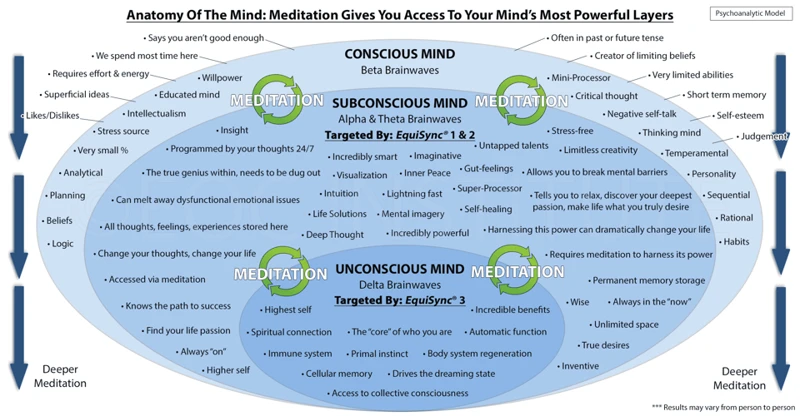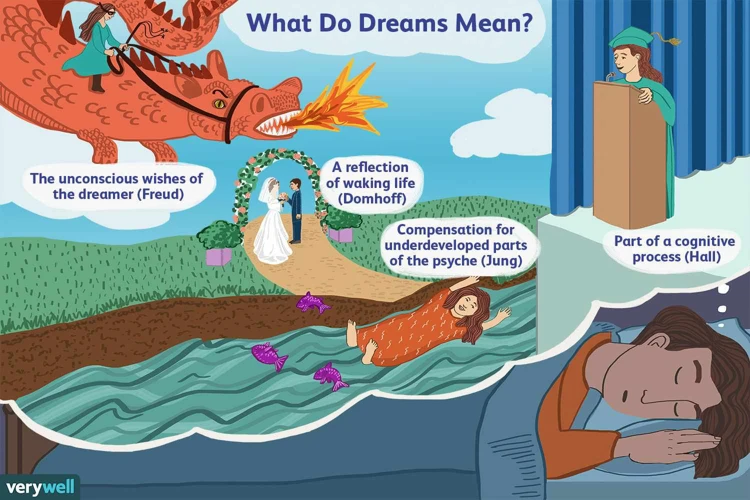Dreams have fascinated humans for centuries, as they offer glimpses into an abstract world that is woven from the fabric of our own minds. Whether bizarre, surreal, or intensely vivid, dreams possess a mysterious allure that captivates our curiosity. But have you ever wondered if there is more to dreams than just being a jumble of random images? In this article, we will explore the profound connection between dreams and subconscious desires, uncovering the potential for dreams to guide us in effective goal setting. Delve into the depths of the subconscious mind, decode the symbolism within your dreams, and harness the power of these nocturnal visions to unlock your true potential and manifest your aspirations. Let’s embark on this enigmatic journey together.
The Significance of Dreams

Dreams hold a profound significance in our lives, acting as a window into the depths of our subconscious minds. They have long intrigued scholars, psychologists, and dream enthusiasts alike, provoking questions about their origins and purpose. Why Do We Dream? While the exact reason for dreaming remains elusive, various theories suggest that dreams may serve as a mechanism for processing emotions, consolidating memories, or fulfilling unmet desires. The Role of Subconscious Desires Within the realm of dreams, our subconscious desires often manifest in symbolic form. These desires, hidden beneath the surface of our waking consciousness, can provide valuable insights into our innermost wants and needs. By unraveling the connection between dreams and subconscious desires, we can tap into their power to guide us towards effective goal setting, unlocking our full potential. To learn more about interpreting recurring dreams for goal setting, check out our article.
1.1 Why Do We Dream?
Why do we dream? This question has puzzled scientists, philosophers, and psychologists for centuries. While there is still no definitive answer, there are several theories that attempt to shed light on the purpose and significance of dreams. One theory is that dreaming is a way for our brains to process and make sense of the events and emotions we experience while awake. During sleep, our brains consolidate memories, sort through information, and create connections between different thoughts and experiences. Dreams may serve as a mechanism to organize and integrate this information, helping us to make sense of our lives and solve problems. Another theory suggests that dreaming allows us to fulfill unmet desires and wishes that we may not feel comfortable expressing in our waking lives. These desires can manifest symbolically in our dreams, offering us a safe space to explore and experience them. Dreams also provide a platform for creativity, allowing us to imagine and envision possibilities that transcend the boundaries of reality. To learn more about the common themes and motifs in dreams and how they relate to our core values and goals, visit our article. Additionally, if you are curious about the practice of lucid dreaming and how it can be utilized for goal setting, check out our guide on lucid dreaming techniques and goals. Dreams continue to be a fascinating and enigmatic phenomenon, and exploring the reasons behind them can offer valuable insights into the workings of our subconscious minds.
1.2 The Role of Subconscious Desires
Our dreams serve as a gateway to our subconscious mind, where our deepest desires reside. The Role of Subconscious Desires in shaping our dreams is profound. When we dream, the subconscious mind takes center stage, presenting us with images, scenarios, and emotions that reflect our hidden longings and unfulfilled wishes. These desires may stem from a variety of sources, such as unexpressed ambitions, unresolved conflicts, or even suppressed fears. Our subconscious mind uses dreams as a canvas to bring these desires to the surface, allowing us to explore them in a symbolic and often abstract manner. By paying attention to the themes, symbols, and emotions within our dreams, we can gain valuable insights into our true desires and motivations. Exploring the recurring motifs and core values in our dreams can offer clues about our fundamental aspirations and goals in life. To further delve into the significance of various dream themes and motifs in uncovering our core values and goals, check out our comprehensive article. Understanding the role of subconscious desires in our dreams is essential for effective goal setting, as it allows us to align our conscious aspirations with our deeper inner desires, resulting in a more fulfilling and meaningful pursuit of our goals.
Unraveling the Subconscious Mind

The subconscious mind is a mysterious realm that holds immense power over our thoughts, emotions, and behaviors. The Power of the Subconscious Understanding its influence is crucial in unraveling the intricate workings of our minds. While the conscious mind is responsible for our logical thinking and decision-making, the subconscious mind operates below the surface, guiding our actions and perceptions in ways we may not even realize. It is believed to house our deepest beliefs, fears, and desires, shaping our experiences and interactions with the world. Unconscious Desires and Dreams Our dreams often serve as a portal into the realm of the subconscious, allowing us to catch glimpses of our unconscious desires and unresolved issues. They act as a language through which the subconscious communicates with us, presenting vivid symbols, metaphors, and scenarios that can provide invaluable insights into our innermost selves. Unraveling the mysteries of the subconscious mind and deciphering the messages within our dreams can profoundly impact our ability to set and achieve our goals.
2.1 The Power of the Subconscious
The subconscious mind holds incredible power that often operates beneath our conscious awareness. It is a vast reservoir of thoughts, emotions, beliefs, and memories that shape our perceptions, behaviors, and life experiences. The Power of the Subconscious lies in its ability to influence our thoughts and actions, even when we are not consciously aware of it. It is responsible for our automatic behaviors, habits, and instincts. While the conscious mind makes rational decisions, the subconscious mind is the driving force behind our deeper motivations and desires. This hidden realm can greatly impact our goal setting process, as it holds the key to unlocking our true potential. By understanding and harnessing the power of the subconscious, we can tap into its immense resources and align them with our conscious goals for more effective and fulfilling outcomes. It is through an exploration of the subconscious mind that we can truly unlock the secrets to manifesting our dreams and achieving our desired goals.
2.2 Unconscious Desires and Dreams
Unconscious desires play a significant role in shaping our dreams. While we may not always be aware of these desires in our waking lives, they can manifest vividly within our dreamscapes, offering glimpses into our deepest wishes and motivations. explores the intricate relationship between these hidden desires and the content of our dreams.
In the realm of dreams, our unconscious desires often materialize as symbolic representations. These symbols can be unique to each individual, reflecting personal experiences, cultural influences, and individual perceptions. For example, a dream about flying may symbolize a desire for freedom or empowerment, while dreaming of water might signify emotional or spiritual renewal.
To decipher the meaning behind these symbols, it is essential to consider the context of the dream and explore personal associations. Keeping a dream journal can be immensely helpful in identifying recurring themes and patterns, shedding light on the underlying unconscious desires that thread through our dreams. Through this process of self-reflection and introspection, we gain valuable insights into our deepest aspirations and motivations.
Recognizing and acknowledging these unconscious desires is a crucial step in effective goal setting. By aligning our conscious goals with the powerful forces of our unconscious mind, we can harness the full potential of our dreams. The integration of these desires into our waking lives can fuel our motivation, provide clarity, and guide us towards achieving our aspirations.
Understanding the connection between unconscious desires and dreams allows us to tap into the wellspring of our creativity, intuition, and inner wisdom. With this awareness, we can utilize our dreams as a toolkit for effective goal setting, unlocking our true potential and creating a fulfilling and purposeful life.
Interpreting Dreams for Goal Setting

Interpreting dreams can be a fascinating and enlightening process, particularly when it comes to goal setting. Symbols and Meanings Dreams often communicate through symbols and imagery, representing abstract concepts in a visual language. Analyzing the symbols present in your dreams can unveil hidden meanings and insights that can be applied to your goals. Keep a dream journal to document recurring symbols and their associated emotions or themes. Identifying Subconscious Desires in Dreams Dreams provide a channel for our subconscious desires to express themselves. By examining the emotions, scenarios, and characters in your dreams, you can gain valuable clues about your deepest desires and aspirations. Pay attention to the feelings evoked during your dream experiences, as they can reveal the underlying motivations that can influence your goal setting process. To explore common dream themes and motifs that may align with your core values and goals, refer to our insightful article.
3.1 Symbols and Meanings
Symbols and meanings play a crucial role in the interpretation of dreams. When we dream, our subconscious mind often communicates through a complex web of symbols, each carrying its own significance. These symbols can represent various aspects of our lives, including our emotions, fears, desires, and challenges. Decoding these symbols is key to understanding the deeper messages hidden within our dreams.
To effectively interpret the symbols in our dreams, it’s essential to create a dream journal. This journal will serve as a personal reference guide, allowing us to track recurring symbols and patterns over time. Each symbol should be recorded in detail, along with any emotions or sensations associated with it. By maintaining this journal, it becomes easier to identify common themes and uncover their underlying meanings.
It’s important to remember that dream symbols are highly personal and can differ from person to person. While there are common archetypal symbols that have universal meanings, their interpretation can still vary depending on an individual’s unique experiences and perceptions. It’s essential to consider the context of the dream, personal associations, and any recent events or experiences that might influence the symbolism.
Additionally, seeking the assistance of dream dictionaries or professional dream analysts can provide valuable insights into the multitude of symbols and their potential meanings. However, it is important to approach these resources with an open mind and use them as a starting point for personal exploration, rather than definitive interpretations.
By delving into the world of dream symbols and meanings, we gain a deeper understanding of our inner selves and subconscious desires. This knowledge empowers us to identify the messages our dreams hold, and harness them as a powerful tool for effective goal setting and personal growth, aligning our conscious desires with our innermost aspirations.
3.2 Identifying Subconscious Desires in Dreams
Identifying subconscious desires in dreams is a fascinating aspect of dream analysis and can provide profound insights into our deepest motivations and aspirations. When attempting to unravel the hidden messages within our dreams, it is important to pay close attention to the symbols, emotions, and scenarios that unfold during sleep. These elements often hold significant meaning, serving as clues to uncover our subconscious desires.
One method for identifying subconscious desires is to keep a dream journal. By recording our dreams immediately upon waking, we can capture the details and vividness of the dream before they fade away. Analyzing these dream entries over time can reveal recurring themes and symbols, providing valuable clues about our subconscious desires.
Additionally, exploring the emotions experienced during dreams can offer valuable insights. Emotions such as fear, joy, sadness, or excitement can reflect our subconscious desires and illuminate the underlying motivations driving our actions and goals.
Another approach involves identifying common motifs or symbols in our dreams. These symbols can vary widely from person to person, but certain archetypes, such as water, animals, or familiar places, may hold universal meanings. By examining the symbolism within our dreams, we can gain a deeper understanding of our subconscious desires and how they may be influencing our waking lives.
It is important to approach the process of identifying subconscious desires in dreams with an open mind and a willingness to explore the deeper layers of our psyche. Each dream is unique and deeply personal, and the meanings within them can be subjective. By embracing the mystery and multi-dimensionality of our dreams, we can uncover hidden desires and use them as a compass for effective goal setting and personal growth.
Utilizing Dreams for Effective Goal Setting
Utilizing dreams for effective goal setting can be a game-changer in manifesting our desires. Setting Specific and Achievable Goals involves analyzing the symbolism and messages within our dreams to set clear and concise objectives. By identifying the underlying themes and motifs in our dreams, we can align them with our core values and aspirations, leading to more focused and purposeful goal setting. Visualizing Dreams as Motivation allows us to harness the power of our dreams to inspire and drive us towards our goals. By vividly imagining the fulfillment of our dreams, we tap into the emotions and motivation needed to take action and overcome obstacles along the way. Additionally, Incorporating Dream Analysis Techniques such as journaling, meditation, or working with a dream therapist can provide deeper insights into our dreams, helping us uncover subconscious desires and patterns that can support our goal setting journey. To explore lucid dreaming techniques as a tool for goal setting, check out our article. By utilizing our dreams as a guiding force, we can unlock our full potential and turn our aspirations into reality.
4.1 Setting Specific and Achievable Goals
Setting specific and achievable goals is a crucial step in utilizing dreams for effective goal setting. When using dreams as a guide, it is essential to translate the symbolic language of dreams into concrete objectives that can be pursued in the waking world. By setting specific goals, you provide a clear target for yourself, allowing you to focus your energy and efforts more effectively. Break down your larger goals into smaller, manageable tasks or milestones that you can work towards. This will give you a sense of progress and motivation as you achieve these smaller objectives, ultimately bringing you closer to your bigger dream. Additionally, it is important to ensure that your goals are achievable. While it’s good to have ambitious aspirations, setting goals that are within your reach will increase your chances of success and prevent feelings of overwhelm or discouragement. Assess your resources, capabilities, and time constraints to determine realistic goals that you can realistically accomplish. Remember, setting specific and achievable goals allows you to bring your dreams from the realm of the subconscious into tangible reality.
4.2 Visualizing Dreams as Motivation
Visualizing dreams as motivation is a powerful technique that can accelerate the achievement of our goals. When we harness the imagery and emotions from our dreams, we imbue our aspirations with a profound sense of purpose and drive. By vividly picturing ourselves living our dreams, we tap into the subconscious mind’s ability to manifest our desires into reality. The key is to engage all our senses during this visualization process. Close your eyes and envision the sights, sounds, smells, tastes, and even the sensations associated with accomplishing your goals. Immerse yourself completely in the dream-like experience. Feel the surge of excitement, the wave of accomplishment, and the deep satisfaction that comes with living your dreams. Let these sensations fuel your motivation and inspire you to take action. By consistently visualizing our dreams, we create a powerful mental blueprint that keeps our goals at the forefront of our minds. This constant reminder helps us stay focused, energized, and committed to the necessary steps to turn our dreams into reality. Remember, visualization is not just about wishful thinking. It is about creating a vivid and detailed mental picture of what we want to achieve, aligning our subconscious mind with our conscious desires, and empowering ourselves to take the necessary actions to bring our dreams to life. So, let your dreams fuel your motivation, harness the power of visualization, and watch as you move closer to your goals with each inspired step.
4.3 Incorporating Dream Analysis Techniques
Incorporating dream analysis techniques is a valuable way to harness the power of dreams for effective goal setting. By delving deeper into the symbolism and meaning behind our dreams, we can gain valuable insights into our subconscious desires and develop a roadmap to achieve our goals. One effective technique in dream analysis is keeping a dream journal. This involves recording your dreams immediately upon waking, capturing as many details as possible. By documenting your dreams consistently, patterns, themes, and recurring symbols may emerge, providing a deeper understanding of your subconscious desires and motivations. Another technique is the use of visualization exercises. By visualizing and mentally revisiting your dreams during waking hours, you can tap into the emotions and motivations associated with those dreams, keeping them at the forefront of your mind and fueling your motivation to achieve your goals. Additionally, seeking guidance from a professional dream analyst or therapist can provide further insights into your dreams and help interpret their meanings in the context of your personal goals and aspirations. By incorporating dream analysis techniques into your goal-setting process, you can unlock the wealth of information hidden within your dreams and harness their power to propel you towards success and fulfillment.
Conclusion
In conclusion, dreams serve as a fascinating portal into the depths of our subconscious minds and can hold great significance in our lives. They offer a glimpse into our innermost desires, fears, and aspirations, providing valuable insights that can aid in effective goal setting. By unraveling the symbolism and meanings behind our dreams, we can identify and understand our subconscious desires more clearly. This understanding allows us to set specific and achievable goals that are aligned with our core values and aspirations. Moreover, incorporating dream analysis techniques into our goal-setting process can provide us with a deeper level of self-awareness and motivation. Visualizing our dreams can serve as a powerful source of inspiration and fuel our determination to achieve our goals. Ultimately, by embracing the connection between dreams and subconscious desires, we can unlock the true potential within ourselves and pave the way for personal growth and success. So the next time you find yourself lost in the reverie of a dream, take a moment to ponder its significance and consider how it can guide you on the path towards a fulfilling and purposeful life.
Frequently Asked Questions
1. What are some common dream themes and motifs that relate to our core values and goals?
Common dream themes and motifs that often relate to our core values and goals include flying (representing freedom and ambition), being chased (symbolizing a desire to confront and overcome obstacles), and falling (indicating a fear of failure or loss of control).
2. Can dreams provide insights into our deepest fears and anxieties?
Yes, dreams can often bring to light our deepest fears and anxieties. These dreams serve as a subconscious outlet for processing and confronting these emotions, allowing us to gain a deeper understanding of ourselves and potentially find ways to overcome them.
3. How can one differentiate between a random dream and a dream that carries significant meaning?
Dreams that carry significant meaning often leave a lasting emotional impact and are more vivid and memorable. They may also contain recurring symbols or themes that are directly linked to our personal experiences, desires, or fears.
4. What is the significance of lucid dreaming when it comes to goal setting?
Lucid dreaming, where one becomes aware that they are dreaming during the dream itself, can be a powerful tool for goal setting. By gaining control over the dream narrative, individuals can actively explore and manifest their goals, visualization techniques, and practice desired skills within the dream state.
5. How can dream analysis techniques, such as journaling, help in setting effective goals?
Dream analysis techniques, such as keeping a dream journal, can help in setting effective goals by allowing individuals to capture and reflect upon the symbols, emotions, and recurring themes present in their dreams. This self-reflection can provide valuable insights into subconscious desires, highlighting areas of focus for goal setting.
6. Are all dreams meaningful and relevant to goal setting?
Not all dreams may be directly meaningful or relevant to goal setting. Some dreams may be simply a reflection of daily events or random thoughts. However, by consistently analyzing and exploring the underlying meaning of our dreams, we can often discover valuable insights that can inform our goal-setting journey.
7. Can dream symbols have universal meanings or are they unique to each individual?
Dream symbols can have both universal and personal meanings. While some symbols may have widely accepted interpretations across cultures, others can be deeply personal and specific to an individual’s experiences, beliefs, and cultural background.
8. How does visualizing dreams as motivation translate into effective goal setting?
Visualizing dreams as motivation helps individuals form a clear mental image of their desired goals. By consistently focusing on this vision, individuals can enhance their motivation, maintain a positive mindset, and take the necessary action steps to achieve their goals.
9. Can dreams reveal hidden talents or untapped potential?
Yes, dreams can sometimes reveal hidden talents or untapped potential. They can provide a glimpse into abilities or interests that may be lying dormant within us, offering inspiration and encouragement to explore these aspects of ourselves in waking life.
10. Is it necessary to consult a professional dream analyst for effective goal setting?
While consulting a professional dream analyst can be beneficial, it is not necessary for effective goal setting. With self-reflection, research, and the utilization of various dream analysis techniques, individuals can gain meaningful insights from their dreams and apply them to their goal-setting journey on their own.








